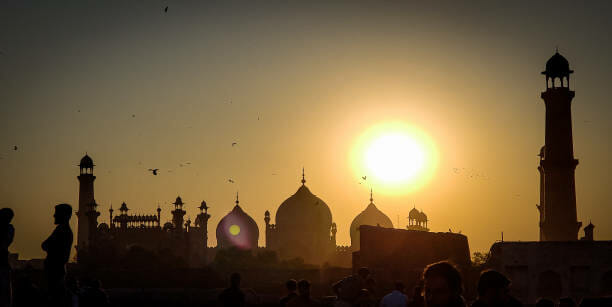By Sheikh Fakhar-E-Alam
Religious tourism plays an important role in reviving the country’s economic activity through promoting religious-based tourism. Realizing the economic and political importance of this sector, the Government has taken ample measures to support this industry. Hence, with Government support and improved law and order situation, religious-based tourism in Pakistan is flourishing and attracting different communities.
Pakistan is situated in a region that has been home to diverging civilizations; the world’s two major religions Buddhism and Sikhism have been dominant in this land for many centuries. Besides, this region also hosted followers of pre-historic religions such as the Aryan, Barhaman, and ancient Iranian and Greeks dated back to 5,000 years. Sindh, Khyber Pakhtunkhwa, and Punjab provinces of Pakistan, therefore, have plenty of historical sites linked to the two religions.
According to various global traveling planners, Buddhist tourism has an estimated market of 100 million dollars across the world. Pakistan’s Gandhara region comprising Mardan, Taxila, and Swat holds a special value for them. Large to medium-sized stupas of Gautam Buddha, the founder of Buddhism, and other heritage sites in Pakistan’s northwestern tribal belt, from the northern Gilgit-Baltistan region to the tourist valley of Swat are very famous among Buddhist tourists from across the globe. A 2016 Gallup survey of the Buddhist population across a selected pool of countries identified 58 million “interested visitors”, out of which 5pc (2.9 million) were “likely to visit” Pakistan.
Importantly, all the Buddhist heritage sites are fully protected and got the status of heritage. Pakistan has seen a significant increase in the number of Buddhist tourists from Japan, Korea, Hongkong, China, and Sri Lanka in the last few years. Pakistan is home to thousands of Buddhists who enjoy all types of perks, privileges, and rights and enjoy liberty like other citizens. The most visited and holiest places for Buddhism in Pakistan are Dharmarajika Stupa, Sleeping Buddha, Takht-i-Bhai, Stupa of Mankiala, and Gandhara civilization.
Takhtbai is a small scenic town located, around 160 kilometers from the capital Islamabad, is the most visited site by the Buddhists, who flock to see the ancient monastery dated back to the 1st century. Takht-i-Bahi alone has the potential to attract a major proportion of the 50 million Mahayana Buddhists in Korea, China, and Japan.
Another very important site located at Taxila in Punjab is also considered a very sacred site for Buddhists, this site includes a Mesolithic cave and the archaeological remains of several Buddhist monasteries.
Korean Buddhists in particular trace their religious origin to the area that is now Pakistan, where Korean monk Hyecho traveled 1,300 years ago. A few years back, a 48-feet-long Buddha was also unearthed in Haripur Khyber Pakhtunkhwa, making it the world’s oldest sleeping Buddha statue.
Guru Nanak was the founder of the Sikh faith and Darbar Sahib was his last resting place, therefore, Sikhs consider Pakistan as a holy place. The five most important pilgrimage sites for Sikhs include Kartarpur Sahib, Gurdwara Panja Sahib, Gurdwara Dera Sahib Lahore, Nankana Sahib, and Samadhi of Ranjit Singh Lahore. Sikh tourism, heritage, cultural and religious tourism are the gems of Punjab.
The successful opening of the Kartarpur corridor has encouraged many in the global Sikh community to consider visiting the holy Sikh site in the heart of Pakistan. The Kartarpur Corridor, an initiative by the current civil-military leadership of Pakistan is intended to link a Gurudwara Darbar Sahib across the Indian side. The opening of the Kartarpur corridor (Narowal) attracted more religious tourists to Pakistan.
Pakistan knows how to respect other religions and recognizes the need for religious freedom. According to Article 36, the Constitution of Pakistan enshrines that the state will protect the legal rights and interests of ethnic minorities.
The development of the Kartarpur Corridor is part of the same effort to promote religious freedom and harmony of ethnic minorities. In November 2021, more than 8000 Sikh pilgrims from all over the world visited Pakistan to celebrate the birth anniversary of Baba Guru Nanak, out of which 3000 entries were allowed by Pakistan High Commission in India.
To facilitate the tourists; Pakistan, in 2019 launched an online visa application process, easing the lengthy process of visa. It has shortened the visa process considerably, which is a major improvement over the traditional visa application process. Pakistan Tourism Development Corporation (PTDC) also holds roadshows and seminars through Pakistani embassies across the world to attract religious tourism. Pakistan has massive potential for religious tourism especially in the case of Sikhs and Buddhists. The federal government has also planned to use the country’s potential for religious tourism and developed special strategies for preserving religious places and providing services to tourists who come here to visit holy places. Adequate hospitality for believers, in addition to generating income, is also helping to improve Pakistan’s soft image. Pakistan is focused to provide all the facilities to religious tourists like simple visa processing, their stay, hoteling, transportation, etc. Pakistan has become the torchbearer of religious tourism and inter-faith harmony across the globe.









